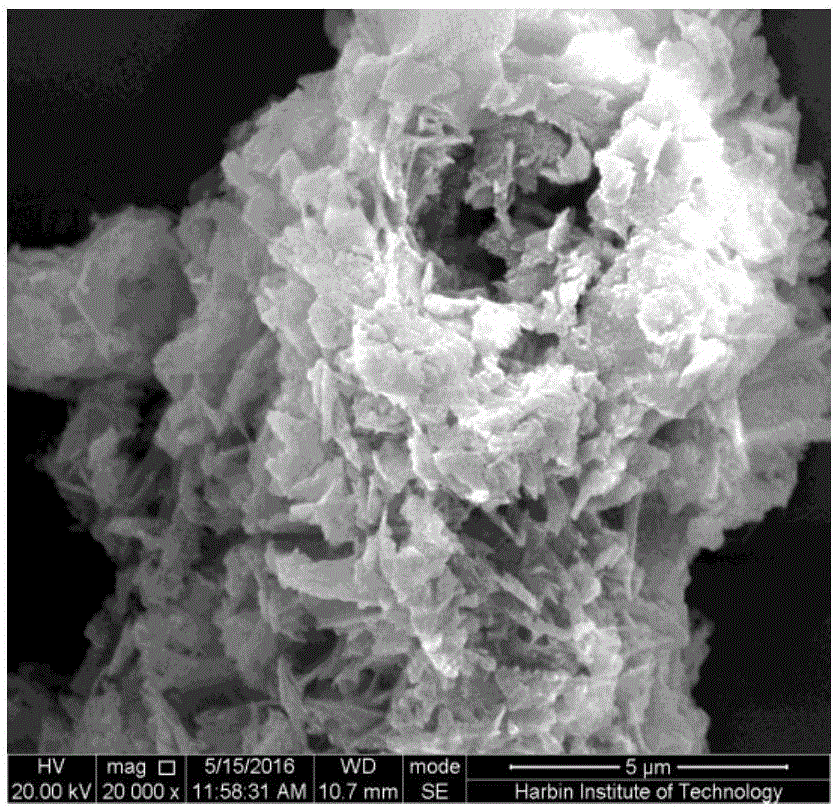Method for treating organic wastewater through catalytic activation of persulfate by utilizing iron oxychloride
A technology of ferric oxychloride and peroxodisulfate, which can be used in oxidation water/sewage treatment, chemical instruments and methods, special compound water treatment, etc. It can solve the problems of short life and achieve long life, stable performance and attenuation. The effect of time 4s
- Summary
- Abstract
- Description
- Claims
- Application Information
AI Technical Summary
Problems solved by technology
Method used
Image
Examples
preparation example Construction
[0038] The preparation method of the FeOCl catalyst includes a partial thermal decomposition method and a chemical vapor phase migration method. During the thermal decomposition process of the partial thermal decomposition method, the formation of oxychlorides and the formation of hydroxides, oxyhydroxides, etc. exist Competition, by precisely controlling the thermal decomposition temperature, atmosphere and heating rate of ferric chloride, etc., the decomposition, hydroxylation, phase transition, crystallization and other processes of the precursor salt can be controlled. FeOCl can be prepared using anhydrous ferric chloride as a precursor, and it is generally believed that the mechanism is hydrated FeCl 3 with anhydrous FeCl 3 The reaction, through the elimination of hydrogen chloride and structural rearrangement, finally forms FeOCl.
[0039] In a specific embodiment, anhydrous ferric chloride can be ground in an agate mortar for half an hour in an environment with an air ...
Embodiment 1
[0042] Such as figure 1 As shown, the embodiment of the present invention 1 utilizes oxyferric chloride to catalytically activate the method for treating organic waste water with peroxodisulfate, comprising the steps of:
[0043] Step S101: Add organic pollutant RhB solution, ultrapure water and catalyst FeOCl to the reaction vessel, and vibrate in a constant temperature water bath shaker for 30 minutes to obtain a mixture;
[0044] Step S102: adding sodium persulfate (PS) solution to the mixture, the sodium persulfate is catalyzed by oxyferric chloride to generate sulfate radicals to degrade organic wastewater;
[0045]The organic pollutant in the organic wastewater is Rhodamine B;
[0046] In order to obtain the effect of the method for utilizing peroxodisulfate to treat organic waste water in the embodiment of the present invention, the following series of experiments are carried out to prove that embodiment 1:
[0047] Experiment 1: The effect of the preparation temperat...
Embodiment 2
[0056] Such as figure 1 As shown, the embodiment of the present invention 2 utilizes oxyferric chloride to catalytically activate the method for treating organic waste water with peroxodisulfate, comprising the steps of:
[0057] Step S201: Add a solution containing organic pollutants, ultrapure water and catalyst FeOCl into the reaction vessel, and vibrate for a period of time in a constant temperature water bath shaker to obtain the mixture;
[0058] Step S202: Add potassium persulfate solution to the mixture, and the potassium persulfate is catalyzed and activated by oxyferric chloride to generate sulfate radicals to degrade organic wastewater;
[0059] The organic pollutant in the organic wastewater is methylene blue;
[0060] The initial concentration of organic pollutants is 50mg / L; the initial concentration of catalyst FeOCl is 250mg / L; the concentration of potassium persulfate (PS) solution is 50mg / L.
[0061] The initial pH of the organic wastewater was 12.
PUM
 Login to View More
Login to View More Abstract
Description
Claims
Application Information
 Login to View More
Login to View More - R&D
- Intellectual Property
- Life Sciences
- Materials
- Tech Scout
- Unparalleled Data Quality
- Higher Quality Content
- 60% Fewer Hallucinations
Browse by: Latest US Patents, China's latest patents, Technical Efficacy Thesaurus, Application Domain, Technology Topic, Popular Technical Reports.
© 2025 PatSnap. All rights reserved.Legal|Privacy policy|Modern Slavery Act Transparency Statement|Sitemap|About US| Contact US: help@patsnap.com



